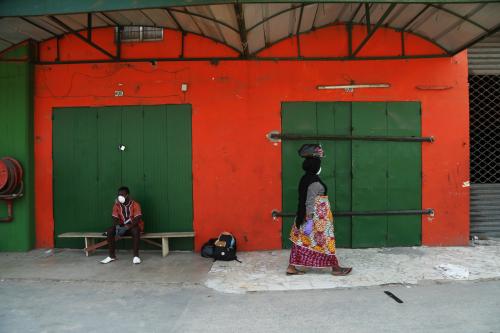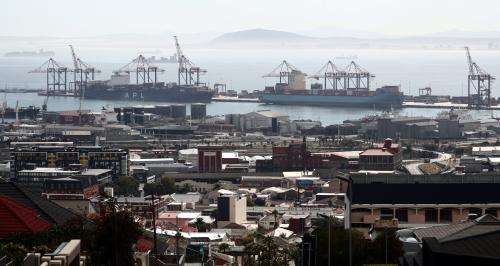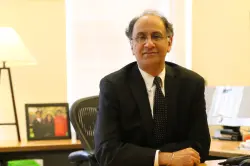For much of the past half-century, a key piece of the global machinery for preventing sovereign-debt crises in developing economies has been governed by a somewhat antique set of ideas: that government lenders trump commercial lenders in the pecking order for who gets repaid, that commercial lenders can be swayed by appeals to morality, and that informal “principles” are sufficient to get the job done.
For nearly as long, it has been clear that very little of this is true. In practice, commercial lenders usually get paid first. Government lenders—known as official bilateral creditors—actually get back less of their money: on average, at least 20 percentage points less than commercial lenders. Even after a debt restructuring, bilateral creditors are more likely than commercial lenders to see a recurrence of late payments from their borrowers.
Yet, in the “three-ring circus” that constitutes the typical sovereign-debt restructuring, official bilateral creditors are the central act; commercial lenders usually come on only at the very end. Government creditors first negotiate the terms of the restructuring with sovereign borrowers. Then they ask borrowers to seek “comparable treatment” from commercial creditors—which is seldom provided.
The result is often a slow-motion tragedy: delayed debt relief, protracted restructuring negotiations, and up to a decade of misery for citizens of the borrowing country.
This approach might have been understandable 50 years ago when low- and middle-income economies owed little to commercial creditors. It’s simply untenable today: Collectively, these economies now owe their commercial creditors nearly five times what they owe bilateral creditors ($2.17 trillion vs. $475 billion, respectively). Moreover, a sizeable portion of the commercial debt is in the form of resource-backed loans—for which future revenues from a country’s natural resources have been pledged as collateral. In short: Commercial creditors have all the muscle they need to enforce payment. “Moral suasion” could not be more futile under these circumstances.
There is a better way—and it can be put into practice immediately through the G-20’s work on the Common Framework for Debt Treatments, the latest international debt-relief vehicle for low-income countries with unsustainable debt. The initiative already represents a key structural improvement: Common Framework signatories include many more major bilateral creditors than does the Paris Club framework, including China and Saudi Arabia.
But progress has stalled. So far, just three countries—Chad, Zambia, and Ethiopia—have applied for relief. One reason is the absence of private sector participation in the G-20’s Debt Service Suspension Initiative (DSSI). Another is that potential applicants fear their access to commercial financing will be cut off if they apply. The glacial pace of restructuring is also a deterrent: Countries want to avoid the economic uncertainty of protracted restructuring negotiations.
It’s time to break the logjam. The World Bank has proposed two straightforward steps:
First, bring commercial creditors into the negotiating room from the get-go. That would go a long way toward aligning the incentives of commercial creditors with those of government creditors and sovereign borrowers. It would make it easier to achieve a key principle of debt restructuring: the need for all creditors to share equally in the burden of debt relief. It also would speed up the process: Bilateral and commercial creditors would be able to reach a restructuring deal jointly rather than separately and sequentially. And it would increase the odds that they deliver a relief program that restores debt sustainability once and for all.
Second, establish a standard mathematical formula for burden-sharing. “Comparable treatment” is easier to achieve with a standard formula for determining the size of debt relief that all creditors will provide. Today, the Paris Club relies upon different methods to assess whether comparable treatment is being achieved. Among bilateral creditors, the practice is to start with debt-service suspensions or loan-maturity extensions before making debt-stock reductions. Commercial creditors move faster: They typically restructure and reduce the whole stock of outstanding debt. A standard net-present value (NPV) formula to achieve equal treatment would improve transparency while bettering the odds of achieving equal treatment.
The world is at a crossroads today. COVID-19 has left developing economies with total debt at a 50-year high: the equivalent of more than 200 percent of GDP. Among the poorest countries—most of them in Africa—nearly 60 percent are at high risk of debt distress or already in it. There is little precedent for such levels of debt remaining harmless under the conditions we see today: When growth is slowing, inflation is up, and a major cycle of monetary-policy tightening is underway.
Yet there is just one international mechanism available for debt relief: the Common Framework. And it is moving with the same plodding pace of its predecessors. So far, only one of the three applicants—Chad—has moved to the stage of restructuring negotiations. With the expiration of the DSSI in December, the applicants will soon face an additional burden: the resumption of debt-service payments. Meanwhile, the danger of debt crises is metastasizing—to middle-income economies as well.
All countries will benefit if we redouble our efforts to provide relief for the poorest countries—and the Common Framework represents the defining test in this regard. If we can strengthen the framework and speed it up, if we can relieve Common Framework applicants of the obligation to make debt-service payments during the negotiations, it will be clear that the international community is up to the challenges ahead of us.
The world is not lacking for solutions to defuse the danger of debt crises. All that’s required is the commitment to carry them out.
The Brookings Institution is committed to quality, independence, and impact.
We are supported by a diverse array of funders. In line with our values and policies, each Brookings publication represents the sole views of its author(s).








Commentary
It’s time to end the slow-motion tragedy in debt restructurings
February 25, 2022